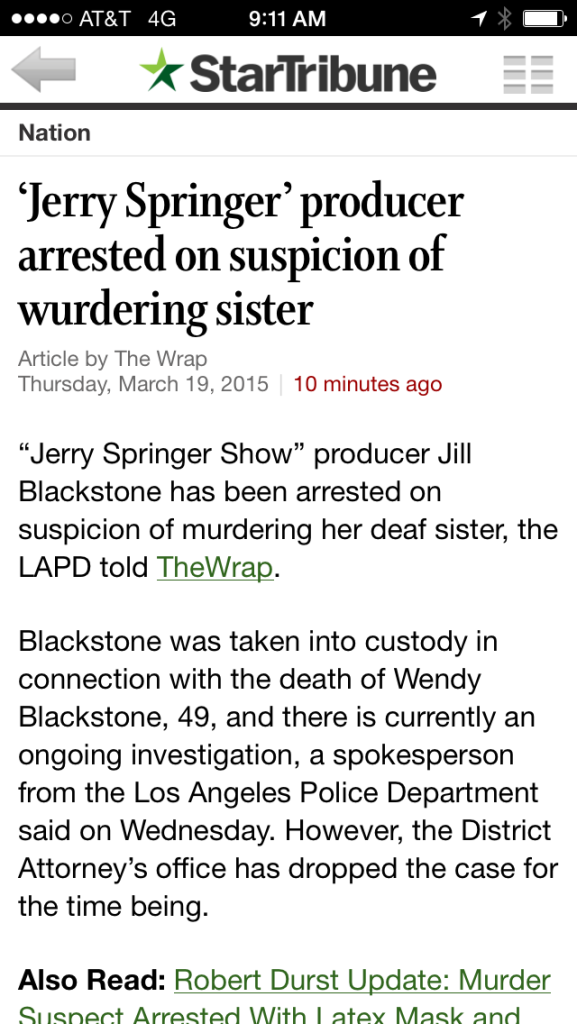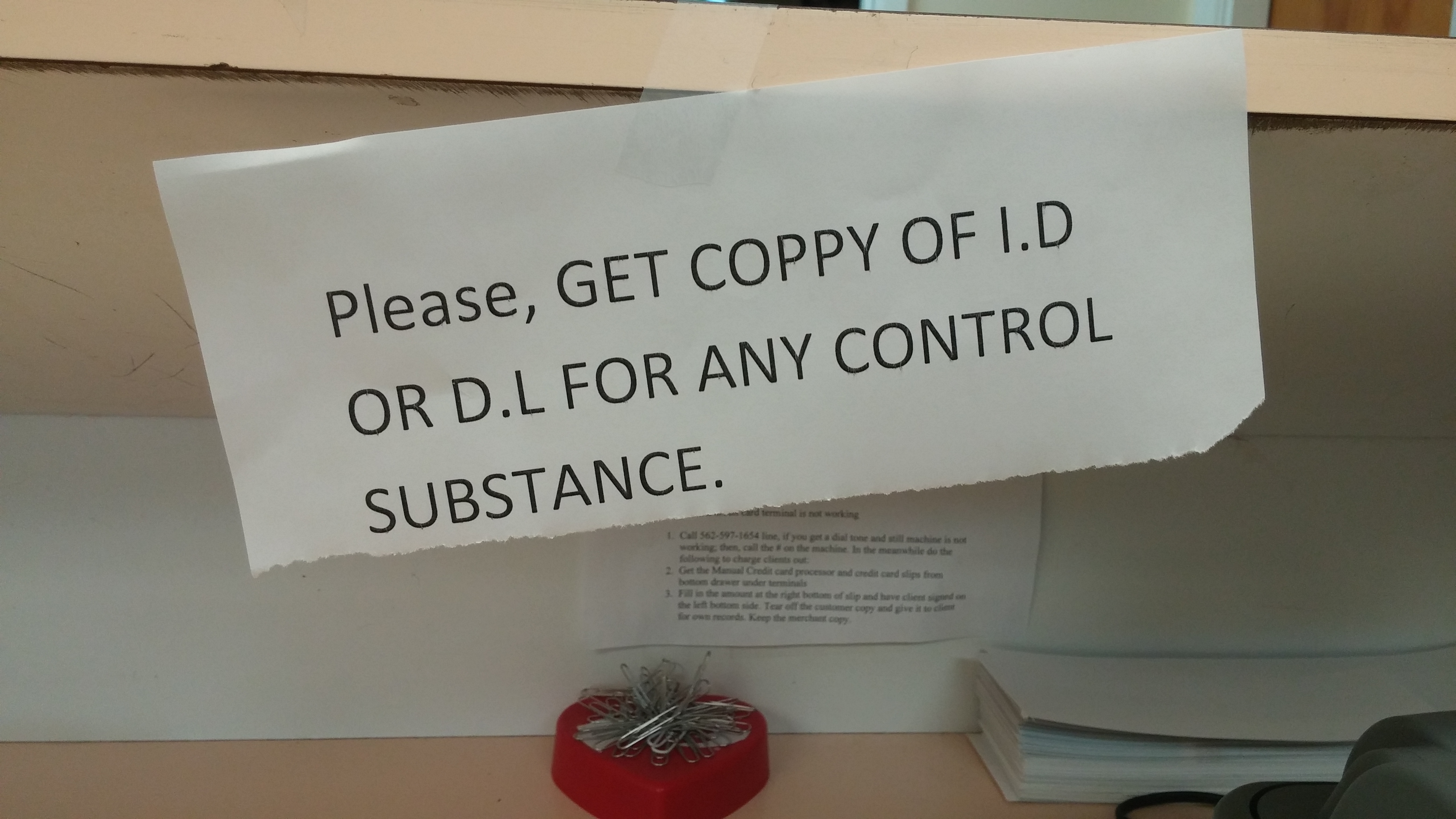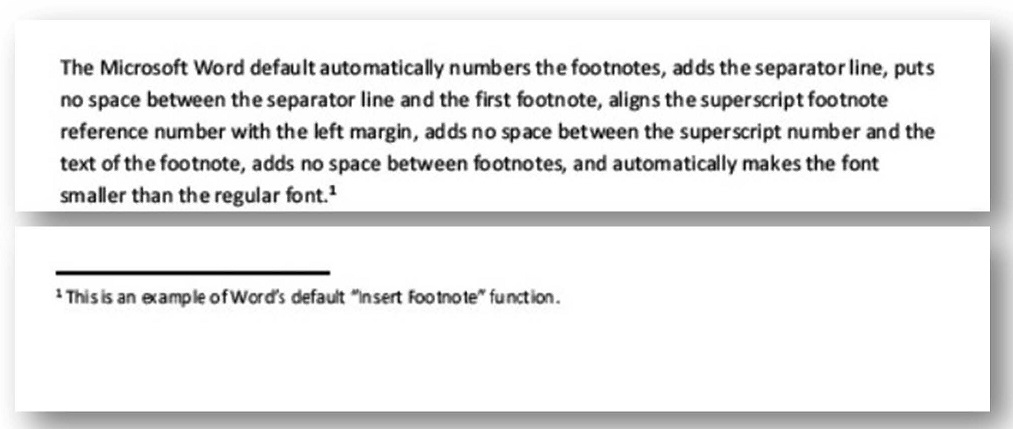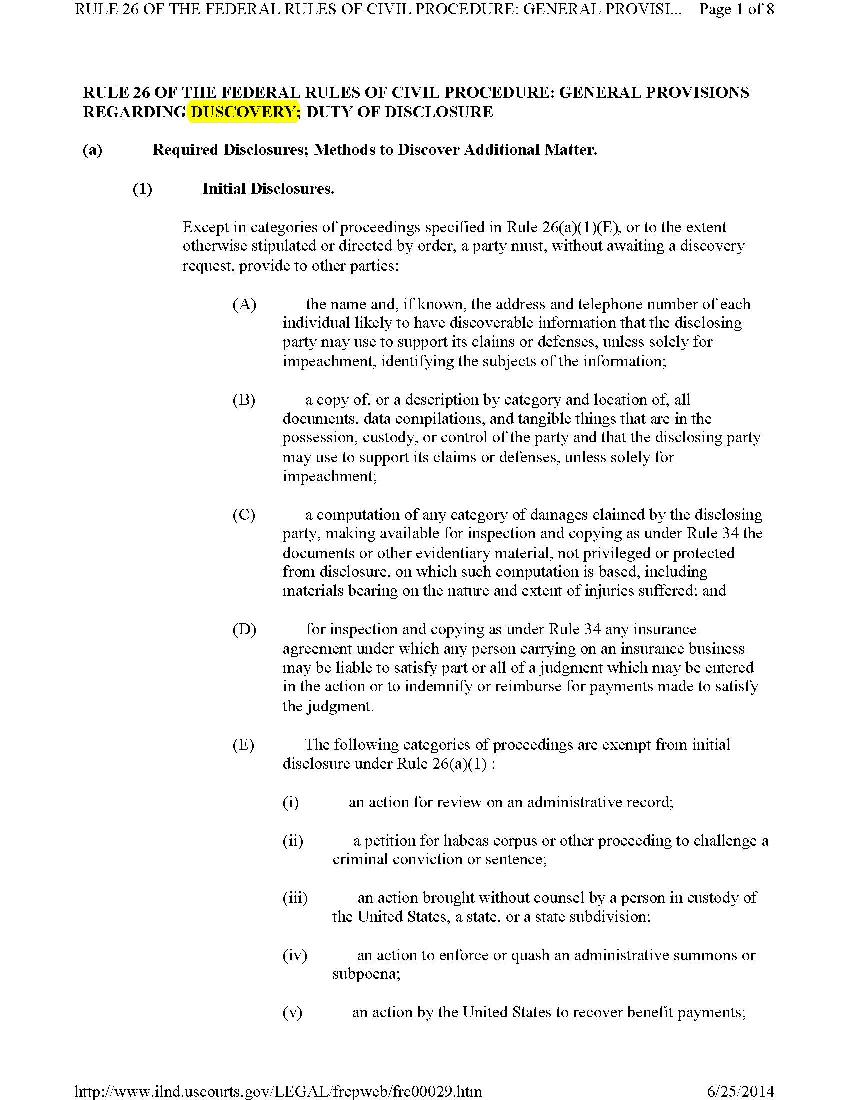This was sent to me by a reader last season. This is something that spell check might not catch. Don’t just rely on spell check! Obviously, newspaper editors don’t pay enough attention as headlines seem to be a constant source of Grammar Giggles!

This was sent to me by a reader last season. This is something that spell check might not catch. Don’t just rely on spell check! Obviously, newspaper editors don’t pay enough attention as headlines seem to be a constant source of Grammar Giggles!

A friend sent this to me. Sometimes when I see an obvious error, I check the keyboard to see if the letters are at least close or if maybe same finger, opposite hand issues. In this case . . . nothing.


I got this question from a reader:
My boss used a lot–and I mean a lot–of postscript messages in his letters. They range from one paragraph to 4 or 5. These paragraphs are lengthy. What are your thoughts on the use of postscript in a business / legal correspondence?
My initial thought is that in today’s electronic world, postscripts (or a PS at the end of a letter) are completely unnecessary because if it is an important part of a letter, it should be included in the body of the letter. I understand the need for a postscript in a handwritten multi-page letter where you might have forgotten something, so that you could add it at the end without redoing the entire letter, but not in a computer generated business letter. But what do the experts say?
The Gregg Reference Manual says that effective use of a postscript will emphasize an idea that was deliberately left out of the body of the letter and will bring special attention to it. On the other hand, your reader may feel that your letter is poorly organized. Think about whether that is a chance you want to take.
To me, I visualize the use of postscripts as a list on a piece of paper and then one Post-it note with an addition to the list, and then another Post-it note, and another until the list is obliterated by Post-it notes with extra information.
If you’re going to use a “PS” for a particular purpose, leave a blank line between the copy notation and the PS and include a colon and one or two spaces after the “PS.” By the way, it is not “P.S.” (with periods) anymore since “postscript” is now spelled as one word.
Do you have a nagging question that you would like answered? Leave it in the comments below or send an email to [email protected] and I will do my best to answer your question.
This sign was sent to me by a faithful blog reader. She saw this sign in an office where she works. There are so many issues in these few lines. First, I’m not sure why it goes from regular first letter cap in the first word to all caps for the rest of the entire message. Next, the word “copy” is misspelled. Then, for some reason, the abbreviations for identification and driver’s license only have one period instead of two. Finally, the word “control” should be “controlled.” Personally, I think this person’s ability to make any more signs should be “controlled.”
It makes me proud when my kids or grandkids send me Grammar Giggles! This one came from my daughter from a wrestling tournament she attended for my grandson. I also thought it appropriate since I get to watch my grandson wrestle in another tournament tomorrow! I’ll have to be on the lookout for other Grammar Giggle material!

This caught my eye recently in a GUM dental products commercial. If you are going to refer to someone by their title, i.e., John Smith, DDS, you do not include “Dr.” at the front, so the reference to this dentist is incorrect. The same rule applies to the title Esq. If you say John Smith, Esq., you do not add “Attorney” to make it Attorney John Smith, Esq. Choose one or the other, but do not use both.

 There are three basic kinds of notes used in writing. First, the footnote, which appears at the bottom of the same page as the referring number. Second, the endnote, which appears at the end of the document with all other references in the document. And third, the textnote, which appears in the text surrounded by parenthesis.
There are three basic kinds of notes used in writing. First, the footnote, which appears at the bottom of the same page as the referring number. Second, the endnote, which appears at the end of the document with all other references in the document. And third, the textnote, which appears in the text surrounded by parenthesis.
While researching for this topic, I found it interesting that there is not a lot of material out there on footnotes in legal documents. I assume this is because the use of footnotes is discouraged and because Bryan Garner disapproves. The argument against footnotes (for other than citations to cases) is a good one. Readers will assume that the information they need is contained in the main body of the document and that a footnote is ancillary or extraneous material adding “fluff,” if you will, to the main thought. Also, there is a very real possibility that it is confusing and potentially irritating to your reader to keep bobbing their head up and down as they’re reading to go from the heart of the document to the bottom of the page. Not to mention it breaks the train of thought associated with reading your brilliant work.
Truth is, however, attorneys use footnotes, so there should be a standard way of preparing them. Unfortunately, there is not. The Gregg Reference Manual uses a completely different format than the standard Microsoft Word default. I, for one, will continue to use the Microsoft Word default. Not only is it one less thing to remember to change, but if using footnotes is part of an attempt to save space in a document subject to page limitations, using the default will help.
The Microsoft Word default automatically numbers the footnotes, adds the separator line, puts no space between the separator line and the first footnote, aligns the superscript footnote reference number with the left margin, adds no space between the superscript number and the text of the footnote, adds no space between footnotes, and automatically makes the font smaller than the regular font. 
One caveat here is that some courts require the footnote to be in the same size font as the regular text. In that case, using footnotes does not save any space–particularly when the court-required font size is 14.
In your main text, there should be no space before your superscript footnote reference number and the word immediately preceding. However, if your footnote reference comes at the end of a sentence, the superscript footnote reference number should come immediately after the terminal punctuation with no space between the punctuation and the superscript number.
You should make an effort to keep your entire footnote on the same page as the reference. If your reader is already annoyed at being “interrupted” by being forced to the bottom of the page in the middle of a paragraph, they will be even more annoyed if they have to go to the next page and back again.
There is little more annoying than reading a document, getting to a footnote, and going to the bottom of the page only to see “Id.,” particularly when you see three or four of them in the next few footnotes. Just add that behind the text and be done with it. Your reader will thank you.
I know that footnotes, endnotes, and textnotes have a place in legal writing. Just use them sparingly and with good cause unless your intent really is to irritate your reader.
This was found by a coworker in the rules for the Northern District of Illinois. Headings unfortunately are not something most people check. They are obviously very important and SHOULD be checked every time.

This one was sent to me by one of my biggest supporters–my son–when he saw it on the Internet. We are assuming they mean “help” because a Google search of “melp” brings up a few interesting things, but none of them fit this headline. And it is a news outlet and we all know their reputation for accuracy . . .

You know we couldn’t get through this week without some kind of Valentine fail. This is one I found on the Internet. Sometimes pretty just isn’t enough..
